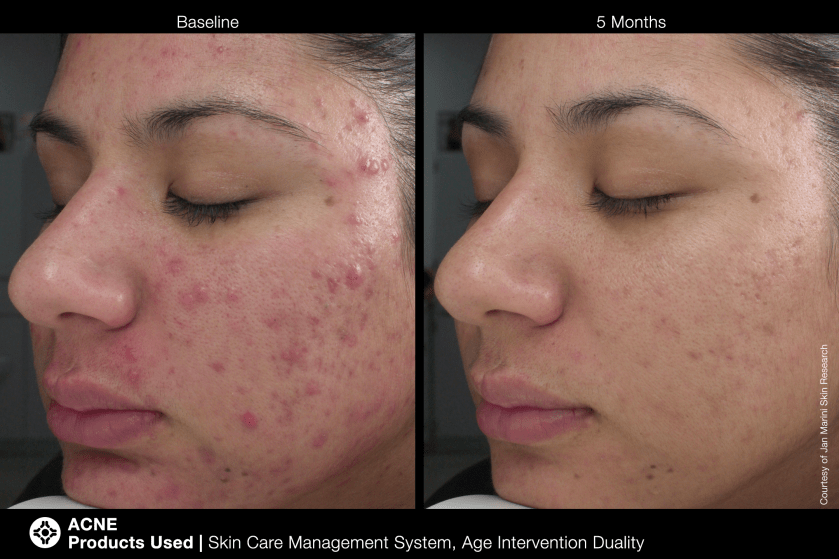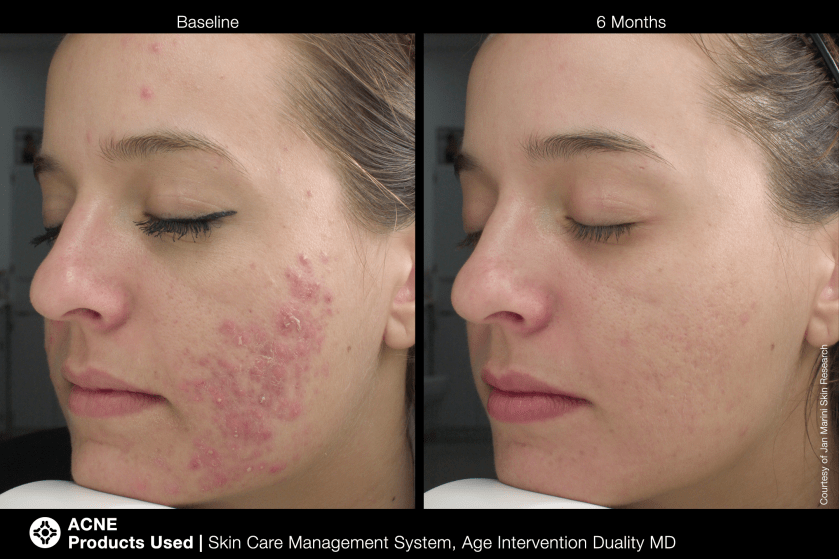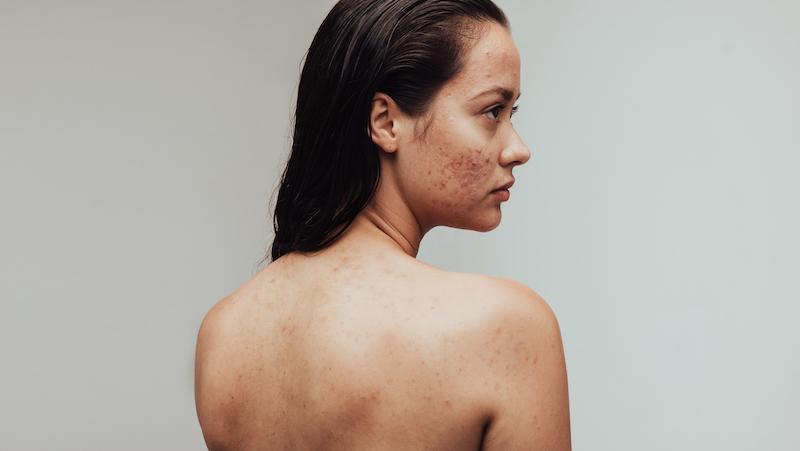In light of June being Acne Awareness Month, Jan Marini Skin Research sheds light on the science behind acne and how certain skincare formulas can address and regulate the underlying causing factors.
When we think of acne, we are used to thinking of teenagers with poor hygiene, poor diet and poor luck. But acne is a multi-factorial skin condition with various degrees of severity and longevity and which can occur in women randomly and well beyond the teenage years.
You may have noticed that adult men rarely present with facial acne. This is due to “terminal beard growth”. By their early 20s, men’s facial hair is thick and coarse and as it grows, it pushes any debris within the follicle out through the follicle opening. Daily shaving assists this process through its regular exfoliating action on the skin’s surface.
Each acne lesion visible on the skin, whether a papule, pustule, nodule or cyst, starts in a hair follicle. Even blackheads and whiteheads are forms of acne.
Our skin surface – including the follicle linings – is comprised of layers of dead cells (keratinocytes) which act as a waterproof barrier to the outside world.
When stimulated by such things as long-term UV exposure, the skin tends to overproduce this protective layer and the dead cells can accumulate.
Within the follicles, the same build up of dead cells can occur, eventually blocking the follicle shaft altogether. The associated sebacious apparatus continues to produce oil, which then accumulates within the bulb of the follicle. Cutibacterim acnes (part of our normal skin microbiome) can multiply within this anaerobic (oxygen depleted) environment and produce toxins which break down the follicle lining. The resulting inflammation with a blocked follicle exit path then leads to an acne lesion.


The scientific evidence is strong on glycolic acid being one of the most effective agents for acne control. Glycolic acid is the smallest alpha hydroxy acid molecule and effectively dissolves the “glue” which binds dead cells together. This helps dislodge the dead cells from a follicle lining.
The addition of benzoyl peroxide (BPO) in acne management is to introduce oxygen to the follicle. The benzoyl drives the peroxide in, after which a chemical reaction causes oxygen molecules to be released, reducing the amount of C. acnes present and therefore reducing the amount of toxins produced. C.acnes is an anaerobic micro-organism and can’t survive in the presence of oxygen. The American Academy of Dermatology classes Benzoyl Peroxide as the “Gold Standard” for acne management.
Other agents which help shed the follicle linings are retinol, which has a keratolytic and desquamating effect, and other acids such as salicylic and azelaic acid.
Just as there are multiple possible contributors to acne onset – UV exposure, hormonal fluctuations, dietary factors and genetics – there are also multiple possible skincare agents and formulations which can contribute to its control.
Jan Marini Skin Research (JMSR) formulates multiple products for acne control and post-breakout repair and bases these on sound and replicable science, bodies of scientific literature and medical endorsement. The addition of specific peptides and anti-inflammatories help enhance bioavailability and improve the speed of outcome.
JMSR doesn’t just rely on ingredient and theoretical science. They believe it’s important to clinically evaluate end formulations and have these evaluations formally carried out by independent medical experts.
Dr Jaggi Rao, Clinical Professor of Medicine at the University of Alberta carried out a formal study on 21 adult acne patients using a JMSR Skin Care Management System combined with Age Intervention Duality MD. His post-study paper after the 12 week trial concluded: “statistically significant improvement as assessed by both test subjects and multiple dermatologist with 100% of patients experiencing a significant reduction in the number of acne lesions, alongside significant improvement in skin quality”.
Read the latest issue of SPA+CLINIC below:
There are 5 ways you can catch up with SPA+CLINIC
- Our quarterly print magazine, delivered to your door. Subscribe here.
- Our website, which is updated daily with its own completely unique content and breaking news.
- Our weekly newsletter – free to your inbox! Subscribe here.
- Our digital magazine – click here to view previous issues.
- Our social media – see daily updates on our Instagram, Facebook & Linkedin




